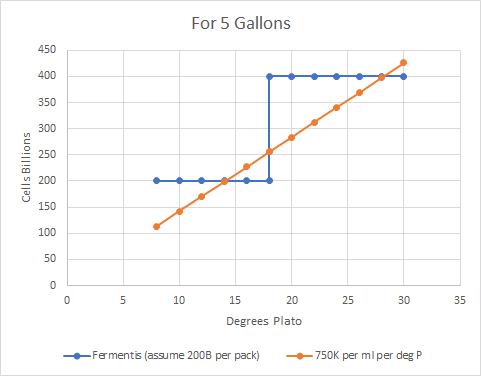I'm planning to brew a 5-gallon batch of IPA tomorrow with the following characteristics:
Grain (mash at 154 F for 60 mins):
11 lbs 2-row
1 lb crystal malt
The projected OG is 1.059 and projected FG is 1.013. My BeerSmith 3 software is telling me I need 1.2 11.5g packets to get there. I've used partial packets before but would prefer to use one.
Do you think I should just use the one, rehydrating as I normally do, or just play it safe and toss two in there? Nothing more frustrating to me than fermentation stopping a few points short.
Grain (mash at 154 F for 60 mins):
11 lbs 2-row
1 lb crystal malt
The projected OG is 1.059 and projected FG is 1.013. My BeerSmith 3 software is telling me I need 1.2 11.5g packets to get there. I've used partial packets before but would prefer to use one.
Do you think I should just use the one, rehydrating as I normally do, or just play it safe and toss two in there? Nothing more frustrating to me than fermentation stopping a few points short.



